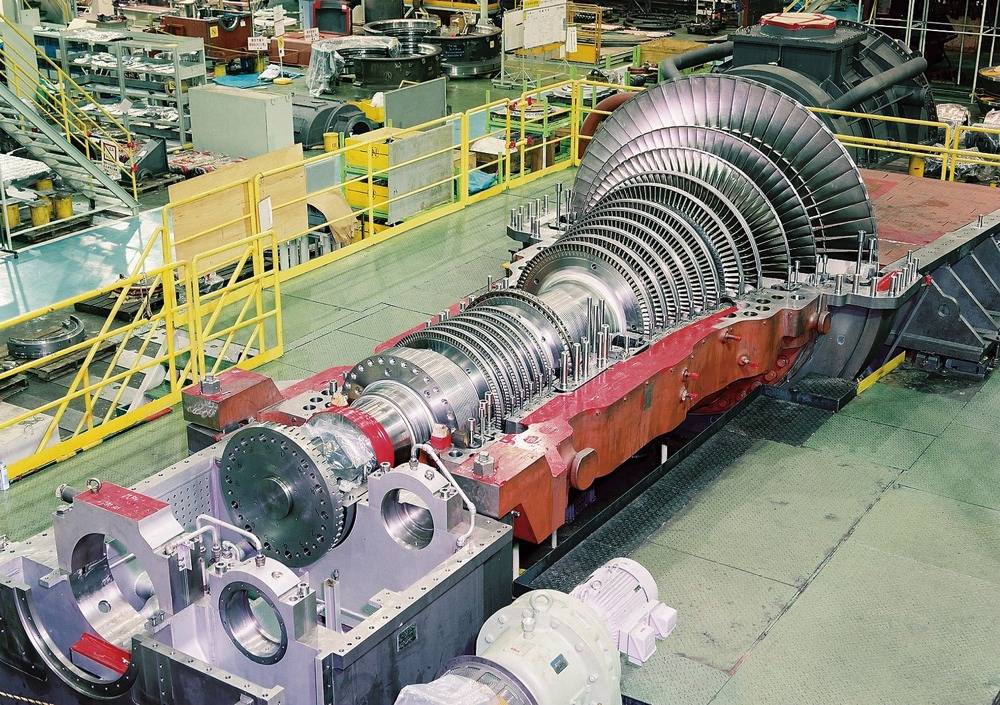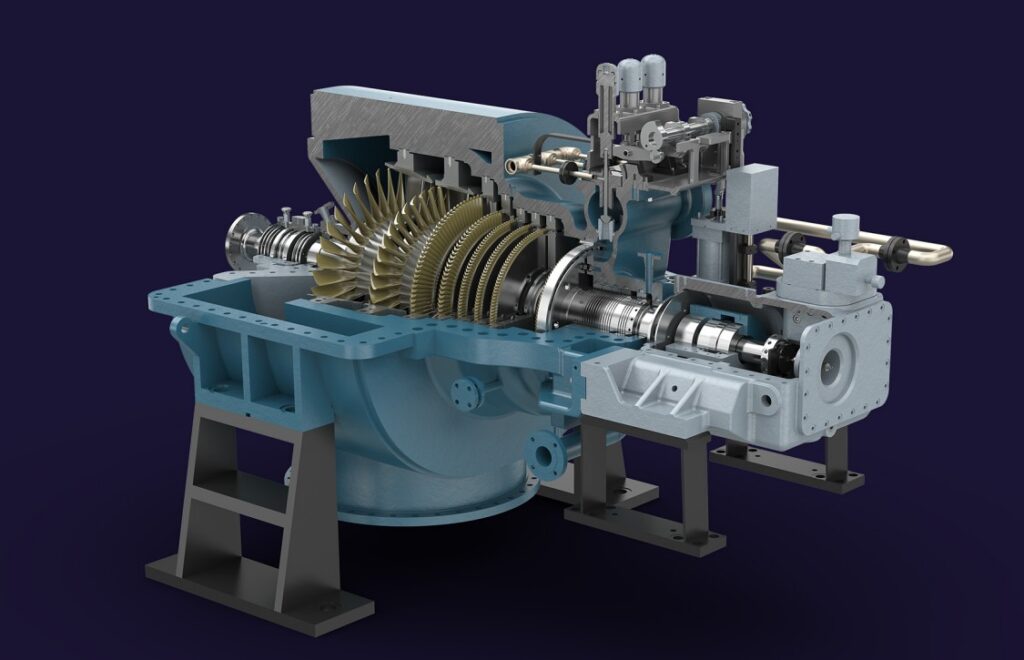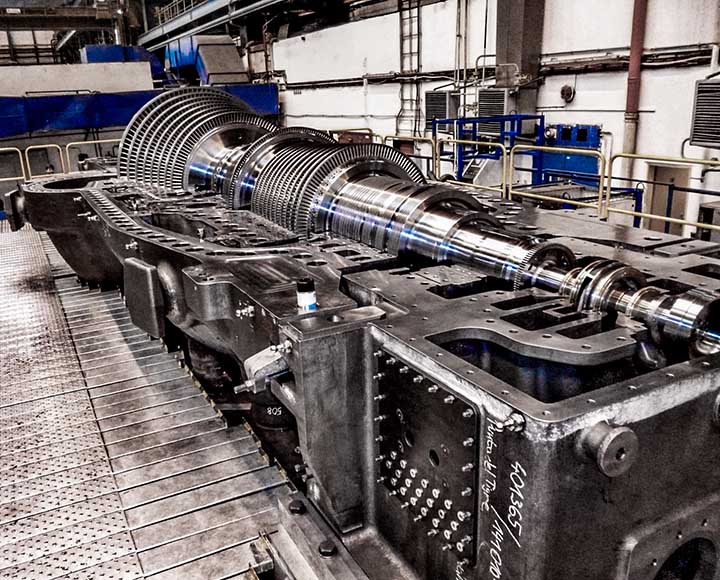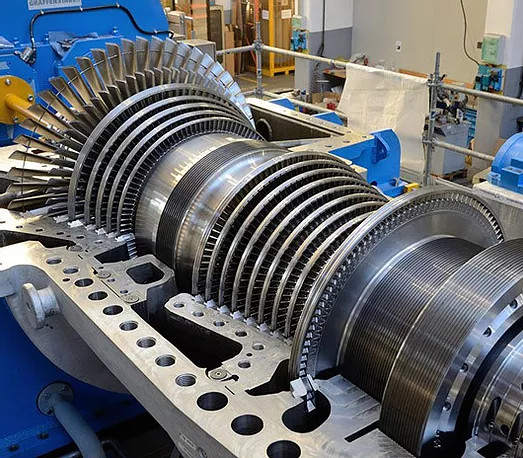FACTORS IMPACTING SAFETY - SPECIAL STEAM TURBINES

Some critical factors that can affect or impact safety in special steam turbines, in existing and new plants, include:
High temperatures and pressures: Special steam turbines operate at very high temperatures and pressures, which can result in safety hazards if not properly controlled.
Corrosion and erosion: Corrosion and erosion can weaken turbine components, leading to failure and safety hazards.
Lack of proper maintenance: Inadequate maintenance can result in equipment failure and safety hazards.
Failure of control systems: Failure of control systems can result in unexpected equipment behavior, leading to safety hazards.
Human error: Human error, such as improper operation or failure to follow safety procedures, can lead to safety hazards.
To ensure safety in special steam turbines, manufacturers, users, and clients can take the following actions:
Develop and follow strict safety procedures and protocols, including regular maintenance and inspections.
Implement advanced control systems to monitor and control turbine performance, and ensure they are regularly tested and maintained.
Use high-quality materials and coatings that are resistant to corrosion and erosion.
Provide adequate training for operators and maintenance personnel, to reduce the likelihood of human error.
Regularly assess and mitigate safety risks, using techniques such as hazard and risk analysis.
Implement safety management systems, such as OSHA’s Process Safety Management (PSM) or the International Organization for Standardization’s (ISO) Occupational Health and Safety Management System (OHSAS), to ensure continuous improvement in safety performance.

WHY, WHEN, WHERE, WHAT, WHICH, HOW TO APPLY SAFETY FACTOR ANALYSIS IN ENGINEERING & DESIGN
To apply safety studies and analysis as part of the engineering and design of special steam turbines in power generation plants, oil, gas, and petrochemical industries, let’s address the key aspects:
Why apply safety studies and analysis: Safety studies and analysis are crucial to identify and mitigate potential hazards, risks, and safety concerns associated with special steam turbines. By conducting these studies, you can ensure the maintainability, reliability, availability, and safety of the turbines, which are critical factors in power generation, oil, gas, and petrochemical industries. It helps prevent accidents, equipment failures, and operational disruptions, ultimately protecting personnel, assets, and the environment.
When to apply safety studies and analysis: Safety studies and analysis should be conducted at various stages of the engineering and design process of special steam turbines, including the initial conceptual design, detailed design, construction, installation, and commissioning phases. It is also important to perform periodic safety assessments and reviews during the operational phase to identify potential safety improvement opportunities and address changing safety requirements.
Where to apply safety studies and analysis: Safety studies and analysis should be carried out both in existing plants where special steam turbines are already installed and in new projects during the design and engineering phase. It is essential to consider the specific operational context, site conditions, and industry regulations and standards applicable to power generation plants, oil, gas, and petrochemical industries.
What safety studies and analysis entail: Safety studies and analysis involve several activities, such as: a. Hazard Identification: Identify potential hazards associated with special steam turbines, including mechanical, electrical, thermal, and chemical hazards. b. Risk Assessment: Assess the severity, probability, and consequences of identified hazards to evaluate their risks and prioritize safety measures. c. Safety Measures Implementation: Implement appropriate engineering controls, administrative controls, and procedural safeguards to mitigate identified risks and ensure safe operation. d. Safety Documentation: Develop safety documentation, including safety plans, safety procedures, and standard operating procedures (SOPs), to provide clear guidance for safe operation, maintenance, and emergency response. e. Safety Testing and Verification: Conduct thorough testing, inspection, and verification of safety systems, safety-critical components, and safety protocols to ensure their effectiveness and compliance with relevant standards and regulations.
Which safety standards and regulations to follow: It is crucial to adhere to industry-specific safety standards and regulations applicable to power generation plants, oil, gas, and petrochemical industries. Examples include the International Electrotechnical Commission (IEC) standards, American Society of Mechanical Engineers (ASME) codes, National Fire Protection Association (NFPA) codes, and local regulatory requirements.
- How to apply it?
Form a multidisciplinary team: Assemble a team consisting of engineers, safety professionals, and relevant stakeholders to ensure comprehensive safety considerations. This team should have expertise in steam turbine design, process safety, hazard analysis, and risk assessment.
Conduct hazard identification: Identify potential hazards associated with special steam turbines. Consider mechanical, electrical, thermal, and chemical hazards. This can be done through techniques such as Hazard and Operability Studies (HAZOP), Failure Mode and Effects Analysis (FMEA), and Fault Tree Analysis (FTA).
Perform risk assessment: Evaluate the severity, likelihood, and consequences of identified hazards. Use qualitative and quantitative techniques to assess risks and prioritize mitigation measures. This may involve methods like Risk Matrix, Layers of Protection Analysis (LOPA), or Quantitative Risk Assessment (QRA).
Implement engineering controls: Develop and implement appropriate engineering controls to prevent or mitigate identified hazards. This may include the use of safety interlocks, pressure relief systems, emergency shutdown systems, fire protection measures, and equipment redundancy. Ensure that safety measures comply with relevant standards and regulations.
Consider human factors: Assess human factors that can impact safety, such as operator interfaces, alarm systems, and ergonomics. Design the turbine and its control systems to minimize the potential for human error and provide clear instructions for safe operation and maintenance.
Incorporate safety in the design: Integrate safety features and considerations into the design of special steam turbines. This can involve designing components for ease of inspection, maintenance, and repair, as well as selecting materials and components that meet safety standards and have a proven track record of reliability.
Develop safety documentation: Create safety documentation, including safety procedures, operating manuals, and emergency response plans. Clearly communicate safety protocols to personnel involved in the operation, maintenance, and troubleshooting of the steam turbines. Provide training to ensure that operators and maintenance personnel understand and follow the safety procedures.
Conduct safety audits and inspections: Regularly perform safety audits and inspections to verify compliance with safety requirements, identify any gaps or deficiencies, and implement corrective actions. This helps to ensure that safety measures are effectively implemented and maintained throughout the lifecycle of the special steam turbines.
Stay updated with regulations and best practices: Keep abreast of industry regulations, standards, and best practices related to safety in power generation, oil, gas, and petrochemical industries. Stay informed about any updates or changes in safety requirements and implement necessary modifications to the design and engineering of special steam turbines accordingly.
Foster a safety culture: Promote a strong safety culture within the organization. Encourage open communication, reporting of near-miss incidents, and continuous improvement in safety practices. Regularly train and educate employees on safety procedures, emergency response, and risk awareness.

PROCEDURES, ACTIONS, STUDIES, MITIGATION, RECOMMENDATIONS TO APPLY SAFETY FACTORS ANALYSIS IN ENGINEERING & DESIGN
To apply safety factors analysis in the design and engineering of special steam turbines for power generation plants, oil, gas, and petrochemical industries, the following procedures, actions, studies, mitigations, and recommendations can be considered:
Hazard Identification: Identify potential hazards associated with special steam turbines, including mechanical, electrical, thermal, and chemical hazards. Conduct a thorough analysis to identify all possible sources of risks and their potential consequences.
Risk Assessment: Evaluate the severity and likelihood of identified hazards. Use qualitative or quantitative techniques such as Hazard and Operability Studies (HAZOP), Failure Mode and Effects Analysis (FMEA), or Fault Tree Analysis (FTA) to assess risks. Determine risk levels and prioritize mitigation measures based on the assessed risks.
Safety Standards and Regulations: Familiarize yourself with relevant safety standards and regulations applicable to special steam turbines in power generation, oil, gas, and petrochemical industries. Ensure that the design and engineering comply with these standards to maintain safety and legal compliance.
Safety in Design: Integrate safety considerations into the design process of special steam turbines. This includes selecting appropriate materials, components, and systems that meet safety standards and have a proven track record of reliability. Consider factors such as equipment layout, accessibility for maintenance, and protection against potential hazards.
Redundancy and Reliability: Incorporate redundancy and reliability features in the design of special steam turbines to minimize the likelihood of failures. This may involve redundant systems, backup power sources, and robust control mechanisms to ensure safe operation even in the event of equipment failures.
Safety Instrumented Systems (SIS): Implement Safety Instrumented Systems to monitor critical parameters and initiate protective actions in response to abnormal conditions or potential hazards. Use technologies such as emergency shutdown systems, pressure relief valves, and flame detectors to ensure the safe shutdown and protection of the turbine.
Maintenance and Inspection: Develop comprehensive maintenance and inspection procedures for special steam turbines. Regularly inspect and maintain the turbines to detect and address potential safety issues promptly. Establish a preventive maintenance program that includes routine inspections, testing, and calibration of safety-related components.
Operator Training: Provide thorough training to operators and maintenance personnel on the safe operation and maintenance of special steam turbines. Ensure that they understand safety procedures, emergency response plans, and the proper use of safety equipment. Regularly conduct refresher training to reinforce safety protocols.
Safety Documentation: Develop safety documentation, including operating manuals, emergency response plans, and standard operating procedures (SOPs). Clearly document safety procedures, guidelines, and responsibilities for all personnel involved in the operation and maintenance of the special steam turbines.
Continuous Improvement: Foster a culture of continuous improvement in safety. Encourage the reporting of near-miss incidents, conduct safety audits and inspections, and implement corrective actions based on lessons learned. Regularly review safety procedures and update them as needed to address emerging risks or changing industry standards.

